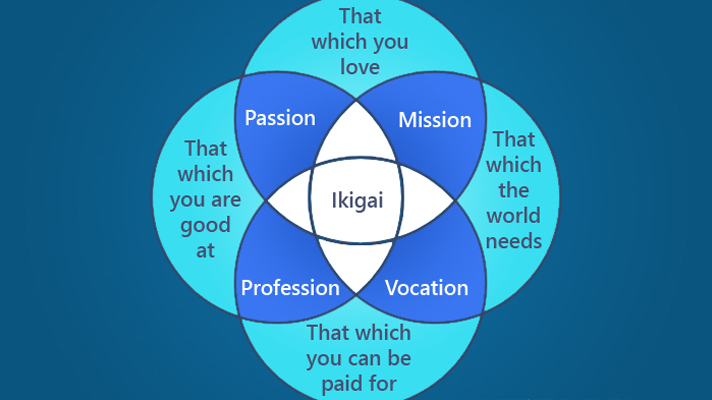Podcast: Download (Duration: 37:21 — 35.0MB)
Get Notified Of Future Episodes Apple Podcasts | Spotify | Amazon Music | Android | Blubrry | Gaana | TuneIn | Deezer | Anghami | RSS | More
In this episode, James has the good fortune of chatting with Flippa.com CEO, Blake Hutchison, on the topic of website trading in a digital marketplace.
Blake will break down the how’s of purchasing websites and site selling on Flippa.
He’ll speak on the current trends in the website trading landscape.
And he and James will look at the website broker services and the due diligence assessment as they affect the Flippa website flipping experience.
Table of contents:
1. A bit of background
2. Utilizing the Marketplace
-
a. How does one actually use a marketplace?
b. The established norm that is WordPress
c. Platforms of choice for ecommerce
d. A scam-proof system?
e. The goal of quality listings
3. Trends and Opportunities
-
a. The observable trends versus a year ago
b. Mostly site stores and apps
c. Starting small and making it big
d. Something for every buyer
e. Services available for buyers
4. Perspectives and Future of Online Trading
-
a. Looking at it from a seller’s viewpoint
b. A personal query of James’s
c. How does AI change the game?
A bit of background
For love of entrepreneurship…
Before becoming CEO of Flippa, Blake attempted to sell his own company through the platform, giving him a firsthand understanding of the company’s mechanics and the process individuals undergo when trying to exit a company. This experience has been crucial in his role.
Blake reflects on the growth of both the industry and Flippa over the past five years during which he has been CEO. He notes that Flippa, which has been operational for 14 years, has grown about five times in size. This growth reflects the evolving nature of digital assets and online businesses from 14 years ago to the present day.
Blake expresses his passion for entrepreneurship and the changing landscape of digital asset classes. He values the dedication people invest in their businesses and enjoys witnessing the evolution of digital assets, from well-established to emerging markets. He feels privileged to lead a team that represents a global community of nearly 1.9 million members, sharing their diverse entrepreneurial stories.
James’s experience of Flippa
James has had his own early interactions with Flippa.com, dating back to around 2009 or 2010, when the company was in its infancy. He recalls how Flippa sponsored a drinks session at his live event for “Small Business, Big Marketing,” a show co-hosted by Luke Moulton.
Over the years, while James has not personally used Flippa’s platform, he acknowledges its significant role within his community and among various educators and guests who have appeared on his show – Matt and Liz Raad, Sophie Howard, and Jaryd Krause, among others.
James highlights the widespread use of Flippa among his community, including students of educators who buy websites on the platform. He notes the growing trend of everyday people, such as surfboard shapers, engaging in the digital world, indicating a surge in the online marketplace.
He looks forward to discussing both buyers and sellers on Flippa with Blake, and to exploring present and future trends in the digital marketplace.
Utilizing the Marketplace
How does one actually use a marketplace?
James would like to start with an overview of using a marketplace, specifically for buying or selling on a platform like Flippa.
Blake, emphasizes that Flippa has evolved into a managed marketplace. This means it employs a vast network of M&A advisors, marketplace integrity specialists, and post-sales support staff, marking a significant shift from its earlier form.
Flippa’s services, says Blake, include providing accurate valuations based on extensive historical sales data. The platform offers a comprehensive listing service with multiple data integrations from various financial and e-commerce tools, ensuring the credibility and quality of assets listed on the marketplace.
Flippa further offers features such as a deal room for buyer-seller communication, integrated legal services for efficient transaction processing, and due diligence support with in-house financial experts. These services aim to create an end-to-end experience for users, enhancing the likelihood of successful transactions on the platform.
James, reflecting on his own experiences, acknowledges the challenges of traditional website selling processes, such as dealing with legal complexities and contract negotiations. He appreciates Flippa’s comprehensive approach, which simplifies these aspects, making the platform not just a listing service but a complete solution for digital asset transactions.
The established norm that is WordPress
James touches on the perception of WordPress as an old-fashioned platform. Despite this, he and Blake acknowledge its widespread use, with over 200 million sites and its status as an established norm in the digital space.
Blake notes that many buyers on Flippa are repeat purchasers, preferring familiar and predictable investments like WordPress sites, especially in niches they understand.
James has had the experience of managing a large number of WordPress sites, illustrating the platform’s utility and scalability. He had a dedicated team for site maintenance and utilized the sites for various purposes, including ad serving and SEO backlinking, demonstrating the versatility of WordPress in different online business models.
What monetization strategies would Blake suggest for a WordPress site in the cooking industry, James asks? Blake is for starting with both AdSense and Amazon for revenue generation, and then transitioning to a premier publisher platform like Mediavine or Ezoic while retaining Amazon. He emphasizes the importance of diversifying revenue streams to reduce risk, indicating the value of multiple monetization methods for a content site.
Platforms of choice for ecommerce
And what would be a good e-commerce platform for selling, say, cooking pans? Blake suggests using Amazon in Australia due to its rapid growth and less saturation in the market, offering a competitive edge. However, in the U.S., he recommends Shopify for building a brand and competing against more established players, considering the high competition and costs on Amazon.
Blake comments on the quality and variety of products available on Amazon, highlighting the platform’s advantages for customers.
James agrees, sharing his personal experience with Amazon’s convenience and the range of products it offers, which local shops cannot match. This underscores the challenges for local retailers in competing with Amazon’s vast selection and quick delivery.
James mentions receiving a promotional postcard from Shopify. Blake acknowledges Shopify’s growing presence in the marketplace, logistics, and payments sectors, suggesting that while the choice of platform might vary, both Amazon and Shopify are significant players. Blake’s position at Flippa is platform-agnostic, focusing on the ease of selling and buying regardless of the platform used.
A scam-proof system?
From what James knows, Flippa is heavy on the proof documents and validating the sellers. Do people still try and scam on the platform?
Flippa’s approach to preventing scams, says Blake, focusing on a couple of things. Listings over $50,000 are human-verified to ensure authenticity, while those below $50,000 require documentation through various integrations like Google Analytics, Stripe, and Shopify. This process is designed to balance marketplace friction with user demand.
One of the challenges is verifying users’ identities, especially institutional buyers, without causing inconvenience. While there is some risk of non-serious users browsing the platform, thorough checks are conducted during the transaction process, including KYC checks and verification of bank balances and proof of funds.
Blake emphasizes the importance of using Flippa’s services to avoid scams. While the platform offers tools, legal offerings, and payment services to protect users, circumventing these can lead to fraud, as seen in cases where buyers attempt to save on fees and conduct transactions outside the platform. He asserts that as long as users engage with the platform’s services, they can avoid being scammed.
The goal of quality listings
Blake compares Flippa’s approach to that of the real estate industry, focusing on encouraging quality listings. Every asset listed above $100,000 on Flippa is either account-managed or brokered, emphasizing the platform’s shift towards a managed marketplace model. This approach mirrors traditional real estate, where professional assistance is considered beneficial.
Acquiring high-quality assets, says Blake is a daily challenge, with about 4,000 new assets added monthly. He also mentions the significant size of the buyer side, with 15 to 20,000 new buyers joining each month, ranging from individual buyers to institutional investors with budgets from $10,000 to $100 million. Attracting buyers isn’t a problem for the platform.
Trends and Opportunities
The observable trends versus a year ago
Blake addresses recent changes in the website marketplace, focusing on the importance of services essential for completing deals. He notes that Flippa has been identifying and addressing friction points based on customer feedback, and a significant trend has been the billions of dollars in deals stalled due to legal processes.
Flippa’s role, Blake explains, has expanded to assist in legal aspects of transactions, driven by feedback from buyers and sellers about the platform’s potential to facilitate deals. This approach reflects Flippa’s method of observing trends and responding to user needs, especially in terms of what buyers are actively searching for.
Blake reflects on the COVID-era surge in digital assets. Interestingly, despite expectations, Flippa didn’t experience an immediate boom, as the average age of a business sold on Flippa is four and a half years. He anticipates a future surge in transactions as recently established businesses mature.
An evident key trend is that buyers in the digital asset space tend to avoid speculative investments like cryptocurrencies and NFTs, preferring stable, cash-flow-positive businesses. Traditional categories like education, finance, health and wellness, and travel remain popular, indicating a preference for established and reliable business models.
Blake touches too on the seller side of the marketplace, observing a significant increase in Fulfillment by Amazon (FBA) listings on Flippa. This trend correlates with Amazon’s growth as a dominant e-commerce platform, attracting a wide range of FBA sellers and buyers to Flippa.
Mostly site stores and apps
Assets on Flippa, says Blake, primarily consist of websites (often WordPress-based), apps, and e-commerce stores. Websites typically generate revenue through affiliate programs like Amazon Associates, advertising revenue through Google AdSense, or premium publisher platforms like Ezoic and Mediavine.
Apps are predominantly on iOS and Android platforms, where developers attract audiences for investors seeking cashflow-generating properties.
E-commerce stores, influenced by platforms like Amazon, Shopify, Bigcommerce, Wix, WooCommerce, and Squarespace, represent a significant segment with substantial investment interest.
The core metrics for evaluating these digital assets include growth potential, sustainability, operating history, brand reputation, and the effectiveness and sustainability of marketing strategies. This mirrors the evaluation criteria of traditional businesses.
Blake highlights the global nature of the marketplace. Unlike physical businesses like cafes, which are likely to attract local buyers, 67% of deals on Flippa are cross-border, connecting entrepreneurs and buyers worldwide. Additionally, Blake notes the impact of current trends, like AI, on the types of assets listed and sought after on the platform, indicating a dynamic and evolving market.
Starting small and making it big
Some success stories on Flippa are eye-opening. Blake shares an example of a small-time investor from Serbia, a DJ and PHP developer who started his journey on Flippa with a modest investment. This individual bought his first site for $600 in April 2019 and has consistently made transactions, averaging five per month, for five years.
This investor’s total investment on the platform has reached $819,000, leading to progressively larger transactions. His most recent purchase was valued at $101,000, and it’s estimated that he has achieved a 300% return on his investment, amounting to around $2.5 million.
This journey from small beginnings to a substantial digital asset portfolio illustrates how one can start with modest investments and gradually build a professional and profitable venture in the digital assets and online business space.
Something for every buyer
Then there are institutional buyers on Flippa, such as a Boston-based aggregator that raised $200 million. This entity frequently purchases app assets, particularly lifestyle-based apps that support small business owners or offer everyday utility like recipe finding. Their acquisitions range from $500,000 to $35 million per app, showcasing the platform’s ability to cater to both large-scale and smaller investors.
Blake generally advises a diversified investment approach, recommending against investing all funds in a single asset, especially for newcomers. He suggests that even those with substantial capital, like $5 million, should spread their investments across multiple assets to mitigate risk. This portfolio approach is a common strategy among Flippa’s users.
James appreciates the diversity of investors on Flippa, from the DJ who funds his passion through website investments, to large institutional players. He also mentions the advice of Matt and Liz Raad, who counsel new investors to start small, highlighting the importance of gaining experience in managing digital assets post-acquisition.
Services available for buyers
Are there any buyers advocate type services, James asks?
Blake explains that Flippa offers a deal origination service for buyers, where for a monthly retainer of $1,500, the platform will actively search for specific assets according to the buyer’s mandate. However, he notes the scarcity of external buy-side brokers working on the platform. Instead, Flippa focuses on guiding new buyers through the account management service, offering help in finding deals and understanding the due diligence process, with an emphasis on education over management.
Blake discusses how Flippa’s account management is oriented: assisting sellers in finding appropriate buyers and facilitating negotiations. He observes that buyers on Flippa are generally more sophisticated and experienced in investing compared to sellers, who often lack experience in selling companies.
Perspectives and Future of Online Trading
Looking at it from a seller’s viewpoint
Now what if someone has an asset, and they want to sell it on the platform, James asks? How long does it actually take to sell a website once you list it?
Higher-value assets, says Blake, typically take longer to sell due to more extensive due diligence. Generally, sellers should plan for about three months to close a sale, with faster times for lower-valued assets.
Blake breaks down the selling timeline: assets under $50,000 have a median closing time of 15 days, while those valued at $250,000 and above can take 70 to 90 days. He also mentions a common post-sale period where the seller may need to stay involved for a transitional consultancy period to ensure a smooth handover to the new owner.
Blake compares Flippa’s matching process to dating, emphasizing the importance of finding the right buyer-seller fit. This process involves more than just financial capability; it’s about matching buyers and sellers who are compatible in terms of business model and objectives, sometimes requiring sellers to stay listed longer to find the ideal match.
When selling a business, it’s important to have organized financials and clear evidence of how expenditures contribute to growth. The ease and speed of selling depend on the readiness and transparency of the seller, with well-prepared businesses being more attractive to potential buyers.
A personal query of James’s
James is curious about the potential sale value of a content site of his, which has substantial organic traffic and earns advertising revenue.
Blake responds with a valuation range – at the low end, the site could be valued at around two and a half times the annualized net profit, while at the high end, it could reach seven and a half to eight times that profit.
Blake further explains the valuation with an example. If the site has a top-line revenue of $200,000 with costs of $100,000, the net profit would be $100,000. This means the site could sell for between $250,000 to $800,000, depending on various factors like traffic quality and growth rate.
James notes the minimal maintenance requirements and strong search traffic of his site. Scaling up the site is an exciting prospect, which he believes could potentially lead to a million-dollar sale.
James has gotten much satisfaction in the past from building and selling digital assets. He also mentions his involvement as a partner in other businesses, looking forward to seeing them sold in the future.
How does AI change the game?
As a final question, James wonders what Blake might anticipate for Flippa, given the changes being brought about by AI.
Blake discusses Flippa’s integration of AI technology, particularly leveraging GPT for a listing writing service. This service helps users effectively showcase their assets on Flippa. Additionally, he mentions the use of machine learning models for matchmaking, which facilitates around 425,000 matches a week, contributing significantly to the platform’s transaction value.
There’s future potential of AI, says Blake, in enhancing the discovery and purchasing processes on Flippa. He envisions AI not only improving buyer discovery but also aiding in legal aspects and due diligence, providing comparative performance data of assets against similar ones around the web. This approach aims to revolutionize how buyers and sellers engage with the marketplace.
Blake also addresses the emergence of AI assets on Flippa and the high multiples at which they are selling, indicating a strong market interest. However, he cautions about the risks involved, likening it to other trends where success varies greatly among participants. He stresses the importance of caution, especially for assets that are relatively new to the market.
Hopefully, he says, that answers James’s question.
Blake has answered all of James’s questions, and James appreciates the valuable time the CEO has given to this episode. He’d like to acknowledge too, that Mike Vander Heiden was instrumental in Blake’s guesting, and if a listener would like to introduce a potential guest they are quite welcome.
Of course, if you’re buying a website, or selling a website, check out Flippa.com
Liked the show? Leave us a review on iTunes













Leave a Reply